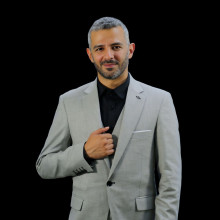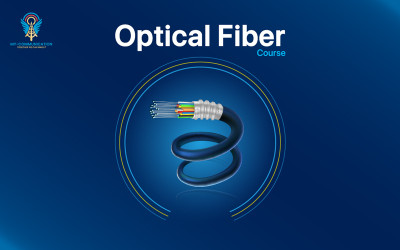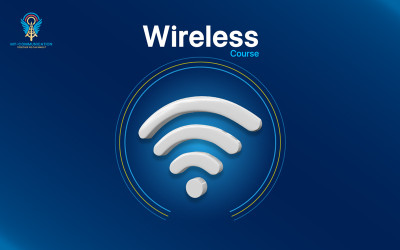Course description
Optical Fiber Transmission Course (END to END)
Your gateway to mastering fiber optic technologies driving the future of modern telecommunications.
The Optical Fiber Transmission course by My Communication Academy is one of the most comprehensive and important training programs in the telecommunications sector. It is the first of its kind in the Middle East to offer a deep and complete exploration of fiber optic technology. This unique course provides a transformative opportunity for trainees to develop their skills and expertise in fiber optic network engineering. It is designed to be a strong starting point for any engineer or graduate looking to build a distinguished career.
This course delivers both foundational and advanced knowledge in fiber optic communications—starting from understanding the components and mechanisms of high-speed data transmission, to studying fiber types, network design, and real-world applications. It also includes full study of optical signal sources and detectors, with a strong focus on passive optical components and their importance in guiding signals. Moreover, it addresses attenuation and dispersion challenges, along with the role of optical amplifiers in enhancing network efficiency.
The course covers cutting-edge technologies like WDM and its types (DWDM and CWDM), in addition to OTN protocols for optical network design at both HLD and LLD levels, as well as TDD. By the end of the course, you’ll be ready to design and implement complete optical communication networks and pursue promising job opportunities in top-tier companies.
General Objectives of the Optical Fiber Transmission Course
This course aims to provide trainees with the essential knowledge and practical skills to understand, design, and operate modern fiber optic communication networks:
Understand the fundamentals and technologies of fiber optics.
Learn the components of optical transmission systems.
Distinguish between fiber types and their use cases.
Analyze optical network performance and identify sources of attenuation and dispersion.
Get familiar with optical transmitters and receivers.
Design optical networks using HLD (High-Level Design) and LLD (Low-Level Design) methods.
Apply WDM, DWDM, and CWDM technologies.
Understand the structure of OTN and its role in telecom networks.
Identify passive optical devices and their functions.
Prepare for jobs in planning, installation, and maintenance of optical fiber networks.
Who Can Benefit from the optical fiber Course
This course is ideal for a wide range of professionals in the telecommunications and technology sectors, including:
Telecommunications and network engineers: those responsible for designing, installing, and maintaining fiber optic networks.
Data center specialists: professionals working in environments that rely heavily on fiber for high-speed, reliable data transmission.
Fiber optic technicians: maintenance and installation specialists who need to understand the practical aspects of fiber installation and troubleshooting.
Students in engineering and telecommunications fields: especially those studying electrical, network, or communication engineering.
Engineers working on 5G projects: as fiber plays a crucial role in the backhaul and support infrastructure of 5G networks.
Main Course Modules
This course offers a rich and immersive dive into one of the most in-demand technologies in modern telecom. It is the golden gateway for anyone seeking a career in fiber optics.
The modules include:
Fiber Structure and Fundamentals: Learn about the basic components of fiber optics and physical phenomena such as refraction and reflection. Compare single-mode and multimode fibers, and understand transmission windows (850 nm, 1310 nm, 1550 nm) and their effect on performance.
Types and Characteristics of Optical Fiber: Explore the differences between single-mode and multimode fibers, dispersion-shifted fibers, and bend-insensitive fibers, including where and how to use each type.
Light Sources and Detectors: Study LED and laser sources (FP/DFB), and optical detectors such as PIN and APD photodiodes. Learn how MUX/DEMUX devices are used to combine and separate signals for efficient network performance.
Passive Optical Components: Understand connectors (LC/SC/FC), splicing techniques, splitters, and couplers. See how these elements enable signal distribution and reliable connections.
Attenuation and Dispersion: Learn about signal losses and how chromatic and modal dispersion affect performance. Understand compensation techniques that ensure clear long-distance transmission.
Optical Amplifiers and Active Devices: Dive into EDFA, Raman, SOA amplifiers, and OEO regenerators. Discover how they boost weak signals and stabilize optical communication.
Wavelength Division Multiplexing (WDM, DWDM, CWDM): Understand how WDM technologies increase network capacity by transmitting over multiple wavelengths. Learn about MUX/DEMUX, OSC, WSS, and ROADM in modern WDM systems.
Key Technical Terms Related to the optical fiber Course
To understand any technical field well, you first need to know the basic terms. So, these important terms will help you follow the course easily and understand the topics we will discuss in depth
Core/Cladding/Coating
Total Internal Reflection
Transmission Windows – 850nm/1310nm/1550nm
SMF (Single-Mode Fiber)
MMF (Multimode Fiber)
Bend-Insensitive Fibers
Lasers (FP/DFB)
LEDs
PIN Diodes / APDs
LC/SC/FC Connectors
Attenuation
Chromatic Dispersion / PMD (Polarization Mode Dispersion)
Dispersion Compensation
EDFA (C/L Band)
Raman / Hybrid Amplifiers
CWDM (18 Channels)
DWDM (96 Channels / 50GHz Spacing)
ROADM / OXCs
Optical Link Design
Frequently Asked Questions (FAQ)
What are the main layers of an optical fiber: Core, Cladding, and Coating?
Core: The central part where light travels.
Cladding: Surrounds the core and ensures total internal reflection.
Coating: Protective layer that provides mechanical strength and protection.
How does Total Internal Reflection enable optical transmission?
Total Internal Reflection occurs when light traveling inside the fiber’s core is reflected back at the core-cladding boundary, allowing the signal to travel long distances with minimal loss.
What are Bend-Insensitive Fibers and why are they important?
Bend-Insensitive Fibers are designed to reduce signal loss caused by tight bends, making them ideal for FTTH (Fiber-to-the-Home) and indoor deployments.
What are LC, SC, and FC connectors?
LC: Small form factor, push-pull connector.
SC: Standard connector, square-shaped, widely used in telecom.
FC: Screw-type, used in high-vibration environments.
What are Raman and Hybrid Amplifiers?
Raman Amplifiers: Use stimulated Raman scattering in the fiber for distributed amplification.
Hybrid Amplifiers: Combine EDFA + Raman for extended reach and better OSNR.



